Listen, there’s no denying Rome is the most iconic destination in Italy, if not Europe as a whole: it’s home to world-renowned landmarks like the Colosseum, the Trevi Fountain, and it even plays host to the Vatican City, so you can’t be exactly mad at tourists for flocking there in the first place.
Be that as it may, we can’t be the only ones who feel the novelty of Rome has far worn off. It has been on the radar of travelers for at least two millennia, and things are only intensifying in the age of social media.
We’re called Travel Off Path for a reason, though, and as you might have guessed at this point, it’s the lesser-known gems that truly pique our interest—and you know, if you happened to be looking for an underrated Italian destination yet to be spoiled by the masses, you’ve come to the right place:
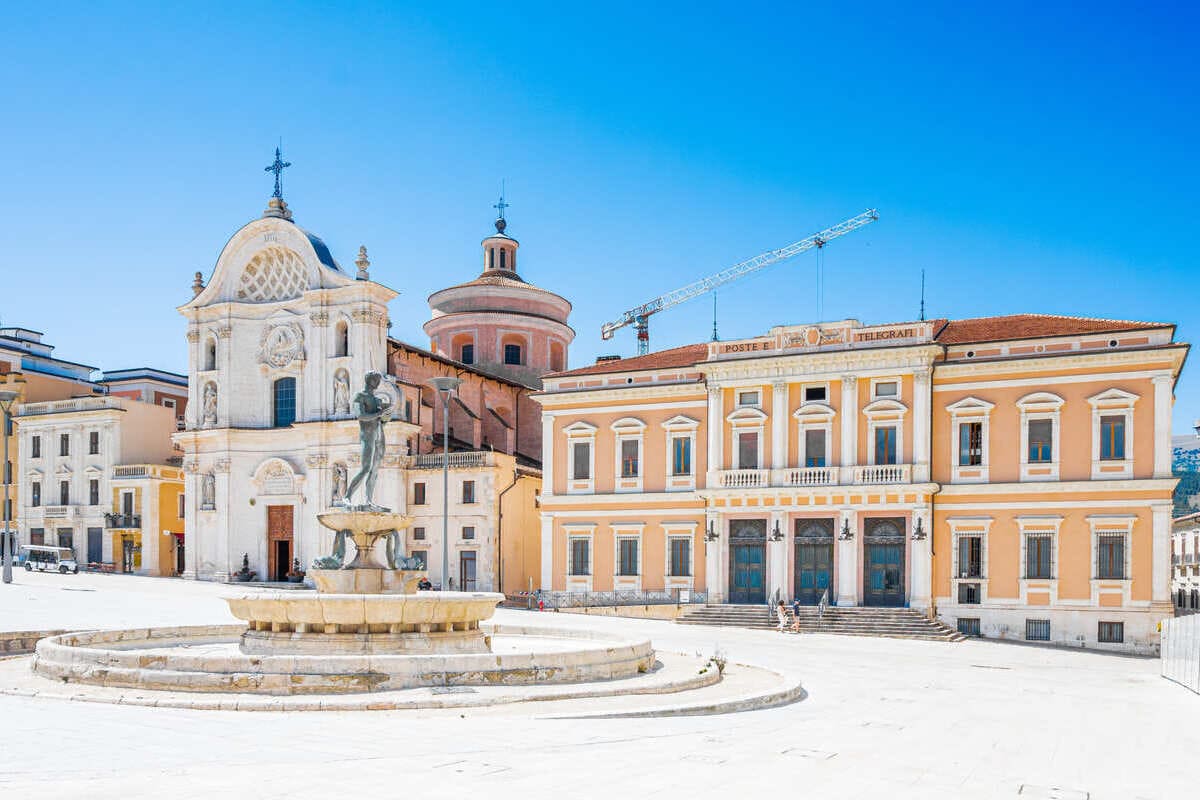
The Italian Capital Of Culture For 2026 Is…
Every year, the Italian Ministry of Culture picks out a new ‘Capital of Culture’. In other words, a city that has contributed significantly to the country’s cultural tapestry, and that’s not necessarily Rome, Florence, or Venice.
We’ve had Pesaro in 2024, Agrigento (a hidden gem of Sicily) in 2025, and for 2026, the crown goes to L’Aquila, the much-overlooked capital of Abruzzo, a small Italian region east of Rome, straddling the Adriatic Sea.
However, if you’re expecting turquoise seas, postcard-ready pebbly beaches, and vibrant beach bars, you might be in for a bit of a surprise. L’Aquila isn’t coastal: in fact, it bestrides a hillside in the middle of the Apennine Mountains.

With only around 70,000 residents, it’s far smaller, more compact than the sprawling cities of Milan or Naples, and unlike these other metropolitan examples, it’s not exactly outgrown its original, largely medieval townscape:
A Medieval City Surrounded By Walls
Encircled by walls, much like it was in the 13th century when it was initially founded, it comprises a maze of cobble-paved, narrow streets, piazzas bounded by charming cafes, and a collection of impressive Baroque churches.
As you might have guessed, it just ticks all of the boxes as far as Italian city breaks go, but you may be wondering what it is about L’Aquila in particular that warrants the Capital of Culture designation. Well, for starters, it’s a well-reputed university town:
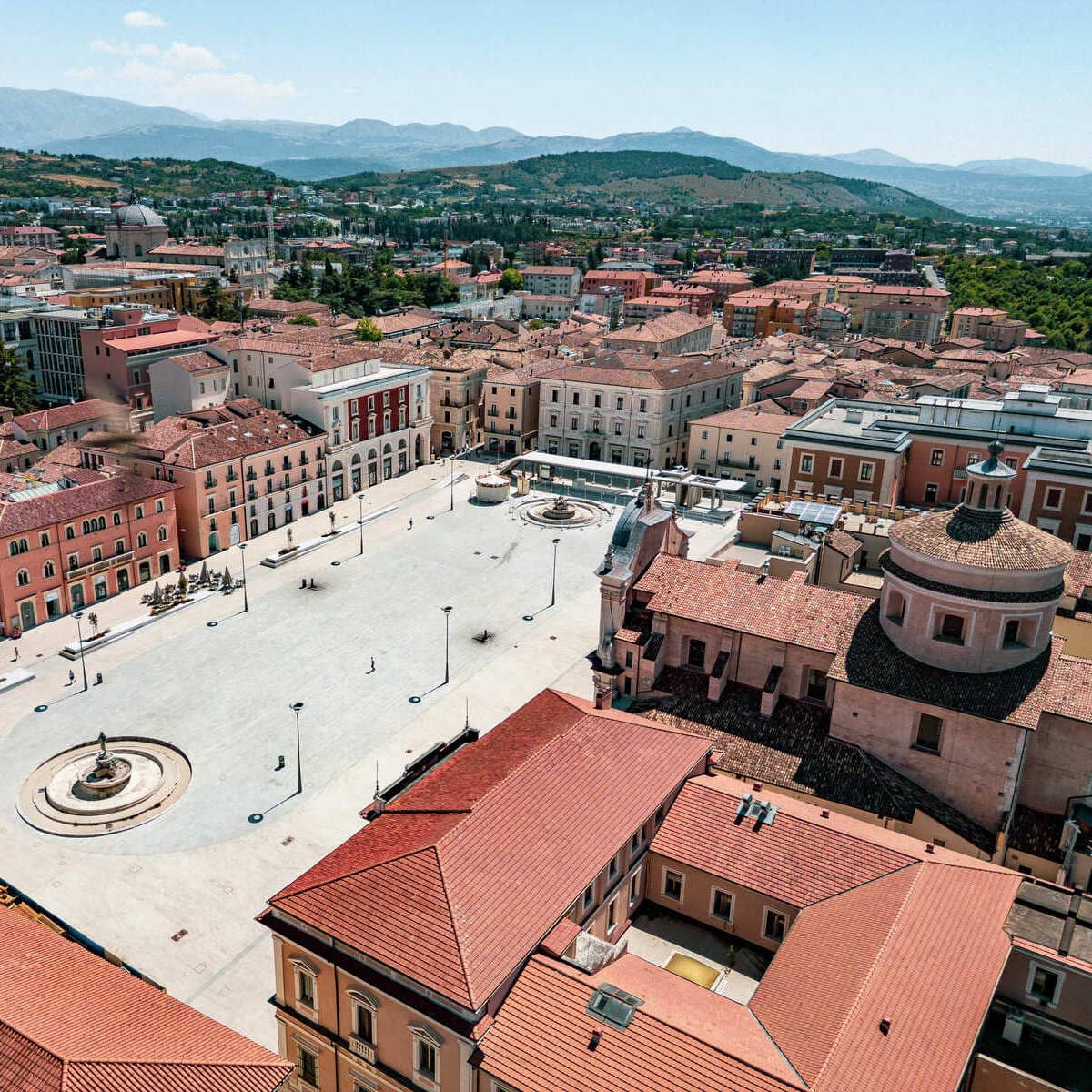
The University of L’Aquila, whose history can be traced back to the 16th century, plays host to a number of institutions, from a Fine Arts academy to a State Conservatory, a Film Institute, and even a Repertory Theater.
In other words, art buffs from all over Italy, including far more developed urban centers, come to L’Aquila to pursue their studies, giving it a singular intellectual atmosphere. This alone could warrant the ‘Capital of Culture’ designation, but there is more.
What To See In L’Aquila
L’Aquila’s architectural wealth is unrivaled, starting with the striking Basilica di Santa Maria di Collemaggio, built all the way back in 1288. Featuring a pink and white façade, it is best known for hosting the Perdonanza Celestianiana, a religious festival rooted in medieval customs.
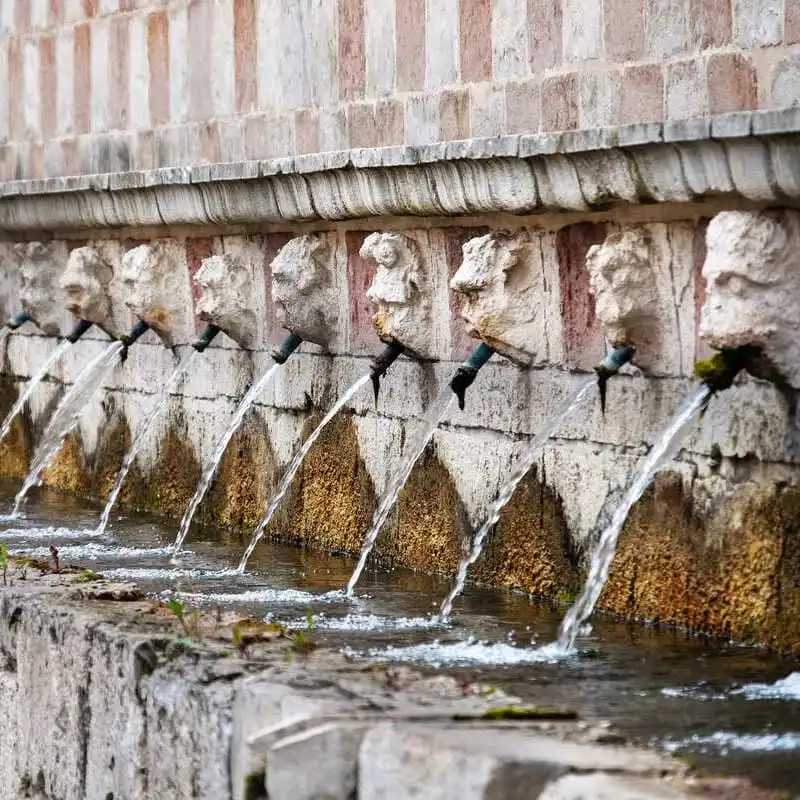
Located in a public square surrounded by stately buildings, the Fountain of 99 Spouts is probably the most iconic monument: as the name indicates, it has just short of a hundred spouts, and each of them represents the 99 villages that are said to have originated the larger city of L’Aquila.
L’Aquila’s history has been marked by devastating earthquakes from 1703 to the present.
The Luminous Fountain, a modern installation, symbolizes the city’s resilience and repeated rebirths. To experience this enduring spirit up close, visit the rebuilt Basilica di San Massimo, or the Baroque Santa Maria del Suffragio.
Looking for fairytale castles? This is Europe, after all, and L’Aquila is no exception to the Old World rule: it is dominated by a 16th-century Forte Spagnolo, built by the Spanish upon their conquest of the city during the Renaissance era.
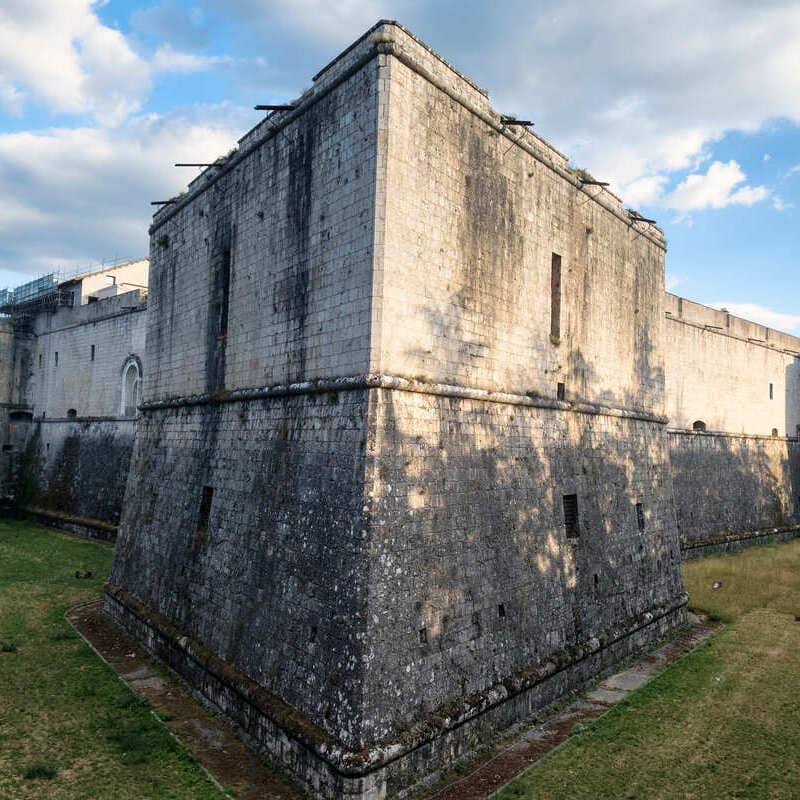
Explore Abruzzo’s Lush Nature
Though the surrounding nature doesn’t necessarily contribute to L’Aquila’s culture, it’s an inherent part of its appeal as a destination. A short drive away from town, Gran Sasso e Monti della Laga is a national park home to Italy’s ‘Little Tibet‘.
A hiker’s paradise, it is characterized by its myth-shrouded hermitage trails, ancient chestnut forests that seem to extend for endless miles, alpine meadows that rival Switzerland’s in beauty, and soaring snow-capped peaks.
Over in Sirente Velino, on the other hand, you’ll find gentler trails leading to postcard-ready limestone gorges, filled with alpine rivers, rich wildlife, and remote medieval villages, including the hilltop, storybook town Rocca di Mezzo.
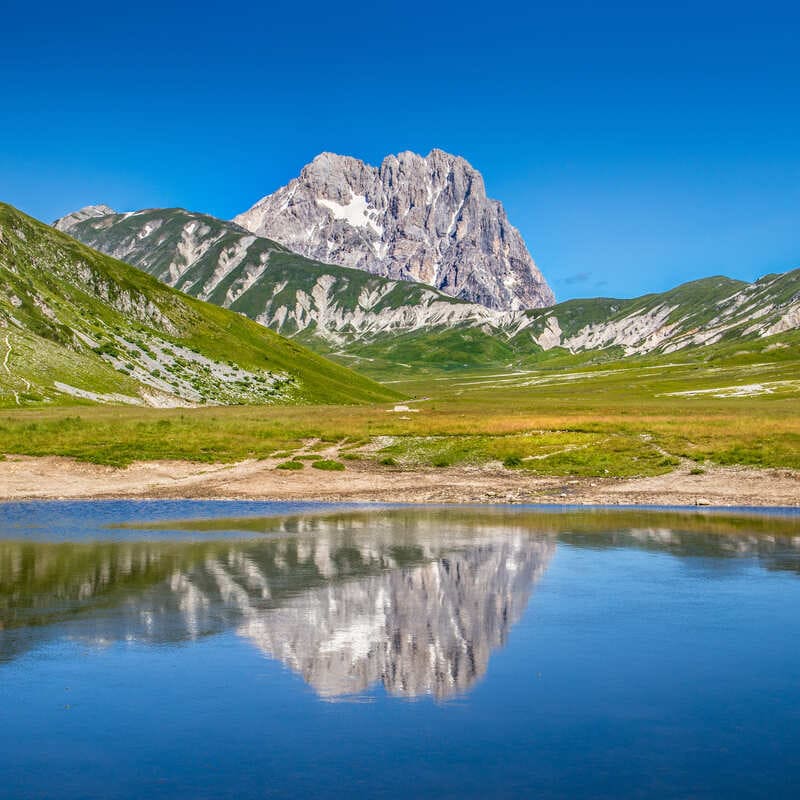
Finally, when it comes to the Adriatic Sea, L’Aquila is a bit too far from the coast to double as a beach getaway, but if you don’t mind the (somewhat) long drive, the resort cities of Pescara, Montesilvano, and Francavilla al Mare are about 1.5–2 hours by car.
L’Aquila Is A Lot Cheaper Than The Average Italian City
We must add that, contrary to Italy’s usual vacation hotspots, L’Aquila is a lot cheaper: B&B stays in the heart of the Old Town average $70–$85 per night, while 3-star hotels start from around $95, like at Hotel Amiternum, a modern listing within short walking distance of the main sights.
Food is equally inexpensive: a dinner at Osteria Corridore, a traditional, family-owned eatery in the historic center, will run you up $16–$28 on average, depending on whether you’re ordering a starter and how many glasses of locally-sourced red wine you’re having to wash it all down.

The locally famous Ristorante Da Lincosta is on the pricier end, with prices averaging $22–$39, but it won’t break the bank, exactly, and the herb-infused roasted lamb and fresh burrata are worth splurging on.
Craving pasta instead? Pisellino Uova e Farina serves the best pizza frita and spaghetti alla chitarra in town (an Abruzzo specialty), and the quality of the wine selection is quite impressive for a mid-range eatery where prices average only $20–$31.
How To Reach L’Aquila When In Italy
If you’re wondering how to reach L’Aquila this fall, the easiest way is via Rome. The Abruzzo capital itself does not have an international airport, which is part of the reason it remains authentically Italian and protected from overtourism.
Direct regional trains are available daily from Roma Termini Station; however, some routes may require a transfer at Sulmona.
In general, the journey duration is 2 hours (or 2.5 hours in the event of a connection), and advance tickets cost between $15 and $25.
Book your tickets directly through Trenitalia, Italy’s national railway operator, here.
The Travel Off Path Advantage: Your Travel Toolkit
Subscribe To Our Latest Posts
Enter your email address to subscribe to Travel Off Path’s latest breaking travel news, straight to your inbox.


